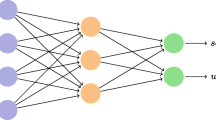Abstract
Rule-based systems are widely used to implement knowledge-based systems. They are usually intuitive to use, have good performance and can be easily integrated with other software components. However, a critical problem is that the behavior of a rule-based system tends to degrade abruptly whenever the knowledge base is incomplete or not detailed enough or when operating at the borders of its expertise. Various forms of approximate reasoning have been introduced but they solve the problem only in a partial way. In the paper we propose new forms of rule inference that tackle this problem, introducing a form of flexible or common sense reasoning that can support a softer degradation of problem solving ability when knowledge is partial or incomplete. The solution we propose relies on the exploitation of semantic information associated with the concepts involved in the rules. In particular, we show how taxonomical information can be exploited to define flexible forms of match between rule antecedents and the working memory, and flexible forms of conflict resolution. In this way, even when no rule perfectly matches the working memory, the inference engine can select rules that apply to more general or to similar cases and provide some approximate solution. The approach has been motivated by work on context aware (recommender) systems where the problem of incomplete descriptions and brittle degradation of problem solving ability are particularly relevant.








Similar content being viewed by others
Notes
Notice that here we are referring to an intuitive notion of completeness.
The specific formula, however, is not important with respect to the subject in this paper; any formula suitable for conjunctions could be used without affecting the principles of the approach.
OntoRulE implements also a notion of context, as it is common to many rule engines. Thus the consequent of a rule may lead to changing the context, moving the focus to a specific set of rules.
A well-known American soap opera.
Initial facts have score 1.
References
Baldauf, M., & Dustdar, S. (2004). A survey on context-aware systems. Technical Report TUV-1841-2004-24, Technical University of Vienna, Vienna, Austria.
Borgida, A., Brachman, R. J., McGuinness, D. L., & Alperin Resnick, L. (1989). Classic: A structural data model for objects. In J. Clifford, B. G. Lindsay, & D. Maier (Eds.), SIGMOD conference (pp. 58–67). New York: ACM.
Borgida, A., Walsh, T., & Hirsh, H. (2005). Towards measuring similarity in description logics. In I. Horrocks, U. Sattler, & F. Wolter (Eds.), Description Logics. CEUR workshop proceedings (Vol. 147). CEUR-WS.org.
Broekstra, J., & Kampman, A. (2004). Serql: An RDF query and transformation language. In Proc. of international semantic web conference.
Buriano, L., Marchetti, M., Carmagnola, F., Cena, F., Gena, C., & Torre, I. (2006). The role of ontologies in context-aware recommender systems. In MDM, (p 80). Washington: IEEE Computer Society.
Cheverst, K., Mitchell, K., & Davies, N. (2002). The role of adaptive hypermedia in a context-aware tourist guide. Communications of the ACM, 45(5), 47–51.
Dey, A., Salber, D., & Abowd, G. (2001). A conceptual framework and a toolkit for supporting the rapid prototyping of context-aware applications.
Dourish, P. (2001). Seeking a foundation for context-aware computing.
Dourish, P. (2004). What we talk about when we talk about context. Personal Ubiquitous Computation, 8(1), 19–30.
Eiter, T., Lukasiewicz, T., Schindlauer, R., & Tompits, H. (2004). Combining answer set programming with description logics for the semantic web. In D. Dubois, C. A. Welty, & M. A. Williams (Eds.), KR (pp. 141–151). Menlo Park: AAAI.
Forgy, C. (1982). Rete: A fast algorithm for the many patterns/many objects match problem. Artificial Intelligence, 19(1), 17–37.
Levy, A. Y., & Rousset, M. C. (1998). Combining horn rules and description logics in CARIN. Artificial Intelligence, 104(1–2), 165–209.
Rada, R., Mili, H., Bicknell, E., & Blettner, M. (1989). Development and application of a metric on semantic nets. IEEE Transactions on Systems, Man and Cybernetics, 19, 17–30.
Resnik, P. (1995). Using information content to evaluate semantic similarity in a taxonomy. In Proceedings of the XI international joint conferences on artificial intelligence (IJCAI) (pp. 448–453).
Rosati, R. (2006). Dl+log: Tight integration of description logics and disjunctive datalog. In P. Doherty, J. Mylopoulos, & C. A. Welty (Eds.), KR (pp. 68–78). Menlo Park: AAAI.
Russel, S., & Norvig, P. (2002). Artificial intelligence: A modern approach. Upper Saddle River: Prentice Hall.
Stefik, M. (1995). Introduction to knowledge systems. San Francisco: Morgan Kaufmann.
Torasso, P., & Console, L. (1989). Approximate reasoning and prototypical knowledge. International Journal of Approximate Reasoning, 3(2), 157–178.
van Setten, M., Pokraev, S., & Koolwaaij, J. (2004). Context-aware recommendations in the mobile tourist application compass. In AH. LNCS (Vol. 3137, pp. 235–244). Berlin: Springer.
Author information
Authors and Affiliations
Corresponding author
Rights and permissions
About this article
Cite this article
Lombardi, I., Console, L. & Pavese, P. Flexible rule-based inference exploiting taxonomies. J Intell Inf Syst 36, 27–48 (2011). https://doi.org/10.1007/s10844-010-0119-2
Received:
Revised:
Accepted:
Published:
Issue Date:
DOI: https://doi.org/10.1007/s10844-010-0119-2




